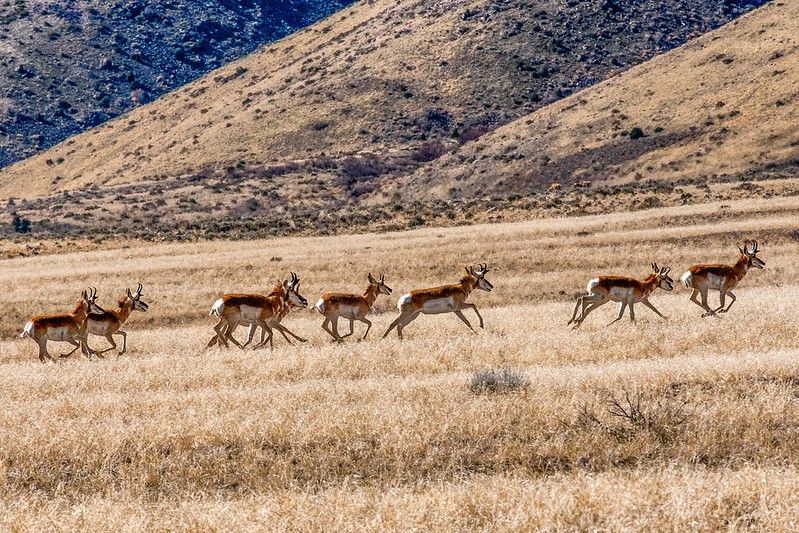Due to our wide-ranging topography, Nevada has some incredibly unique wildlife habitats that range from the Mojave Desert in Southern Nevada to the sagebrush steppe in Northern Nevada. Our state is the seventh-most biodiverse, and we have many success stories due to the hard work of the Nevada Department of Wildlife and conservation organizations. Funding is always key, and we always need to be looking for new revenue opportunities to finance habitat improvement and other worthy projects. Nevada’s wildlife should always be managed by sound science in a sustainable manner that allows species to thrive.
Unfortunately, a number of threats continue to mount against the habitat that wildlife depends on for its well being. And we have learned that for many species in Nevada habitat means multiple places throughout the range depending on the season. Protecting wildlife habitat isn’t just about protecting the places animals live but protecting the lands that connect those ranges, Wildlife Corridors.
What are Wildlife Corridors?
- Big-game species like deer and elk migrate seasonally hundreds of miles every year, generally over the same path to have their babies and care for their young. These are known as “migration corridors”
- In order to thrive, wildlife needs intact habitat and migration corridors that allow them to move safely between seasonal habitats.
- Nevada needs to create a comprehensive plan to maintain, enhance and restore critical migration corridors. The more open space and intact habitat we have for wildlife, the healthier their populations will be, and the more our outdoor recreation economy will thrive.
What’s the problem?
- Despite the abundance of open space in our state, our wildlife are dying. Nevada ranks 3rd among all states for having the highest percentage of species at risk, in part due to the destruction of historic migration corridors
- In addition, Nevada does not currently have any formal protections for migration corridors for any species.
- Migration corridors in Nevada are threatened by things like unchecked development, roads, climate change, and mineral exploration
What’s the solution?
- Other western states are already adopting state policies that maintain and restore wildlife and their habitat. New Mexico enacted the Wildlife Corridors Act which led to the creation of a Wildlife Corridors Action Plan and Colorado’s Governor issued an executive order in August directing state agencies to work together to address habitat fragmentation and loss.
- Nevada has already taken some steps to address this issue. In August 2019, the Nevada Department of Transportation and the Department of Wildlife received the Federal Highway Administration’s Environmental Excellence Award for their partnership
What’s can you do?
- Sign the petition to encourage our decision-makers and state officials to embrace and promote wildlife corridors.
